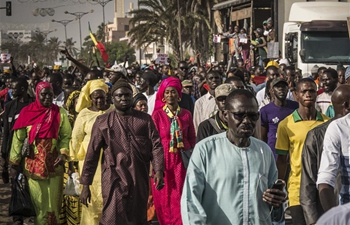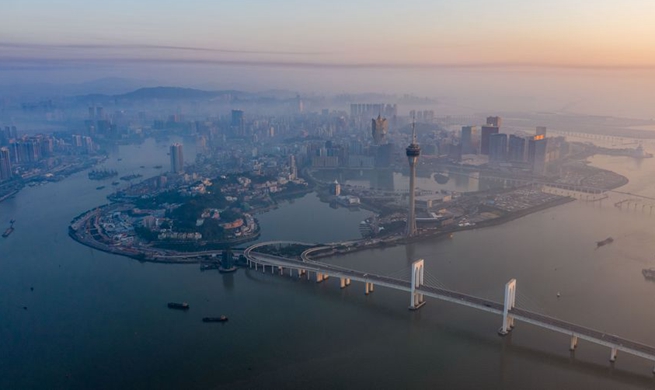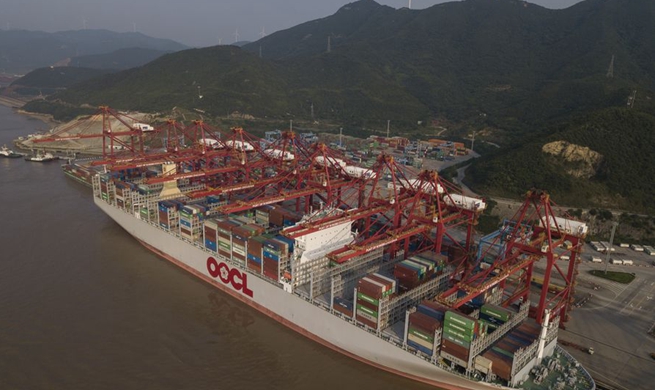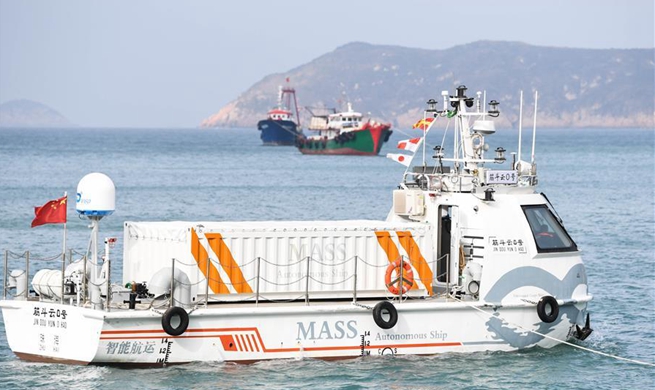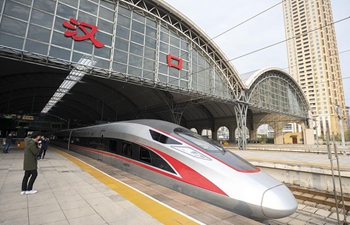HONG KONG, Dec. 15 (Xinhua) -- The year 2019 has been a fruitful year for China and the 10-member Association of Southeast Asian Nations (ASEAN) in their concerted efforts to consolidate ties and forge a closer community with a shared future.
One year into the implementation of the landmark China-ASEAN Strategic Partnership Vision 2030, the two sides have built stronger economic and trade links, further synergized their development plans, and made major progress in managing differences. All these were achieved while the world is afflicted with rising protectionism and unilateralism that undermine globalization and development.
In fact, the China-ASEAN partnership has become one of the most dynamic partnerships that the bloc has with a dialogue partner, said Thai Prime Minister Prayut Chan-o-cha, whose country is the rotating chair of ASEAN for 2019.
Founded in 1967, ASEAN now groups Brunei, Cambodia, Indonesia, Laos, Malaysia, Myanmar, the Philippines, Singapore, Thailand and Vietnam.
ROBUST TRADE FOR SUSTAINED GROWTH
The past year has not been easy for the global economy, but China and ASEAN have confronted the downward pressure by further expanding their trade and economic links.
ASEAN has surpassed the United States in 2019 to become China's second largest trading partner, while China has remained the bloc's top trading partner for 10 years. Trade volume in the first half of 2019 reached 291.85 billion U.S. dollars, up 4.2 percent year-on-year. The total trade volume this year is expected to reach 600 billion dollars.
With promising trade prospects, both sides aim at a joint target of two-way trade of 1 trillion dollars and 150 billion dollars in investments by 2020.
Moreover, the upgraded protocol of the China-ASEAN Free Trade Area (CAFTA) came into effect in October, covering areas including trade in goods and services, investment, economic and technological cooperation, to name a few.
The CAFTA, covering 11 countries with a population of around 2 billion people, has brought "visible and tangible" benefits to businesses in the region, becoming a model for mutually beneficial and win-win cooperation among developing countries, said Chinese Ambassador to ASEAN Huang Xilian.
ALIGNING DEVELOPMENT PLANS FOR SEAMLESS CONNECTIVITY
In a bid to coordinate efforts to facilitate connectivity, China and ASEAN have taken a major step this year by synergizing the China-proposed Belt and Road Initiative (BRI) and the Master Plan on ASEAN Connectivity 2025.
For better connectivity, China is encouraged to actively support the development and financing of ASEAN infrastructure projects such as railways, highways, port and harbors, airports, and power and communication infrastructure, according to a joint statement adopted in November.
As one of the key regions along the BRI, ASEAN is now home to a range of iconic infrastructure projects under the BRI cooperation, including the Jakarta-Bandung High-Speed Railway in Indonesia, the China-Laos railway, the Phnom Penh-Sihanoukville expressway in Cambodia, the East Coast Rail Link in Malaysia and the China-Singapore land-sea trade corridor, among others.
The alignment of strategies also covers the connection of information and technology to better benefit people in the digital age. The two sides launched the Smart City Cooperation Initiative at the 22nd ASEAN-China Summit this year, pledging to explore science, technology and innovation cooperation to support more sustainable urbanization. More and more partnerships will be established between cities of both sides.
JOINTLY UPHOLDING MULTILATERALISM, FREE TRADE
Over the past year, China and ASEAN have continued to stand together and firmly uphold multilateralism and an open world economy amid exteral headwinds, playing a big part in regional growth.
The marathon negotiations for the Regional Comprehensive Economic Partnership (RCEP), a mega trade pact, achieved a major breakthrough this year. Fifteen participating countries of the RCEP will start legal preparations for the signing of the pact in 2020, after concluding text-based negotiations and essentially all market access issues, although India has yet to join the pact citing "significant outstanding issues."
China and ASEAN member states have always been working together to advance the RCEP talks and push for their early implementation, a testament to their commitment to multilateral free trade.
"The multilateral trade approach is swiftly replacing unilateralism and protectionism, which are the enemies and even economic cancer of global development," said Joseph Matthews, a senior professor at the BELTEI International University in Phnom Penh.
Meanwhile, China and ASEAN have also boosted coordination and cooperation in multilateral platforms such as the United Nations and the World Trade Organization, and strengthened communication in key regional issues such as the Rakhine state issue in Myanmar as well as the Korean Peninsula peace process, said Huang, the Chinese ambassador.
SIGNIFICANT PROGRESS IN ESTABLISHING REGIONAL RULES
The year 2019 has witnessed crucial achievements in China and ASEAN countries' endeavors to properly manage their differences and establish regional rules, particularly in the South China Sea issue.
Apart from working to comprehensively and effectively implement the Declaration on the Conduct of Parties in the South China Sea (DOC), China and ASEAN member states have spared no efforts in pushing forward consultations on the widely-anticipated Code of Conduct in the South China Sea (COC), an upgraded and strengthened version of the DOC.
In August this year, they finished the first reading of the Single Draft Negotiating Text of the COC ahead of schedule, and the second reading is underway, with China proposing to conclude the COC talks within three years.
With the improving situation in the South China Sea, China and ASEAN have been better positioned to carry out more maritime cooperation, such as scientific investigations, crackdowns on maritime crimes and search and rescue operations. The two sides have successfully held maritime exercises twice and are actively discussing the institutionalization of maritime exercises and meetings between defense ministers.
By making continuous progress in the COC consultations, China and ASEAN countries have demonstrated that they are fully capable of settling disputes, formulating regional rules and safeguarding regional peace and prosperity by themselves.
(Xinhua reporters Liang Hui in Jakarta, Mao Pengfei in Phnom Penh and Zhao Qing in Hong Kong also contributed to the story.)




